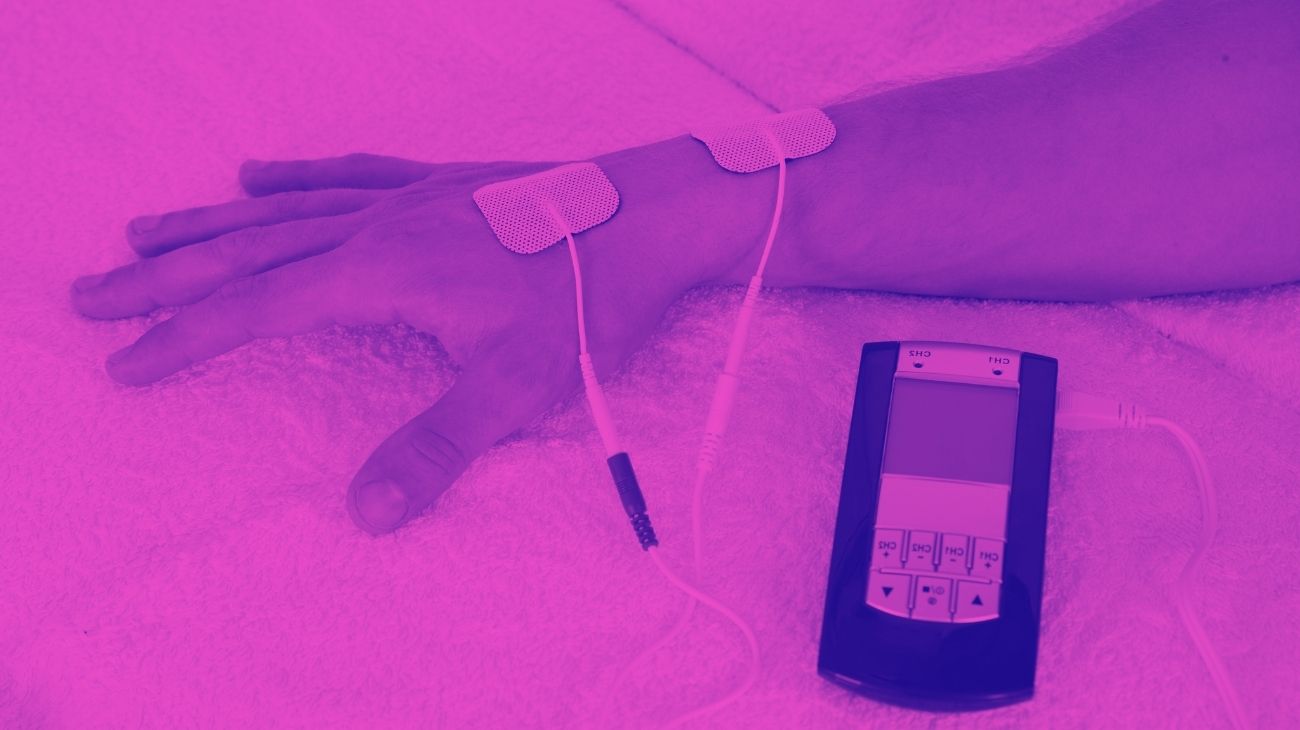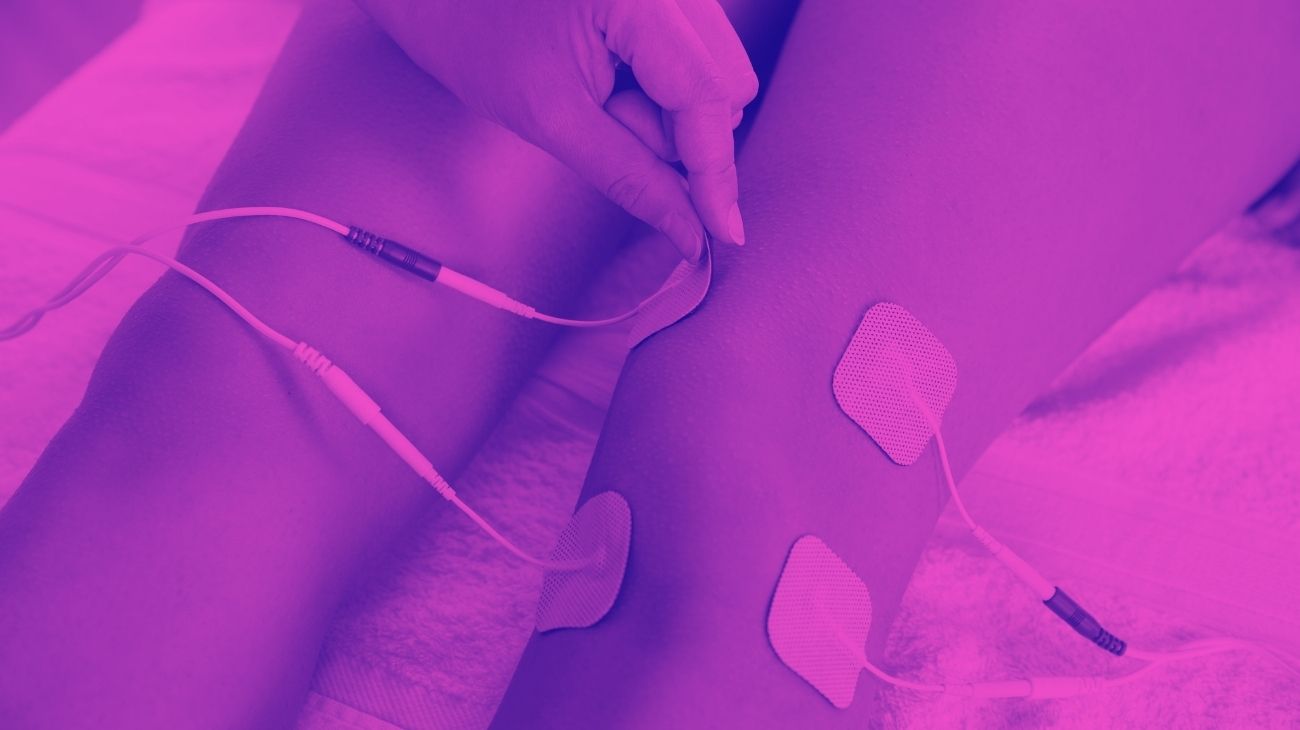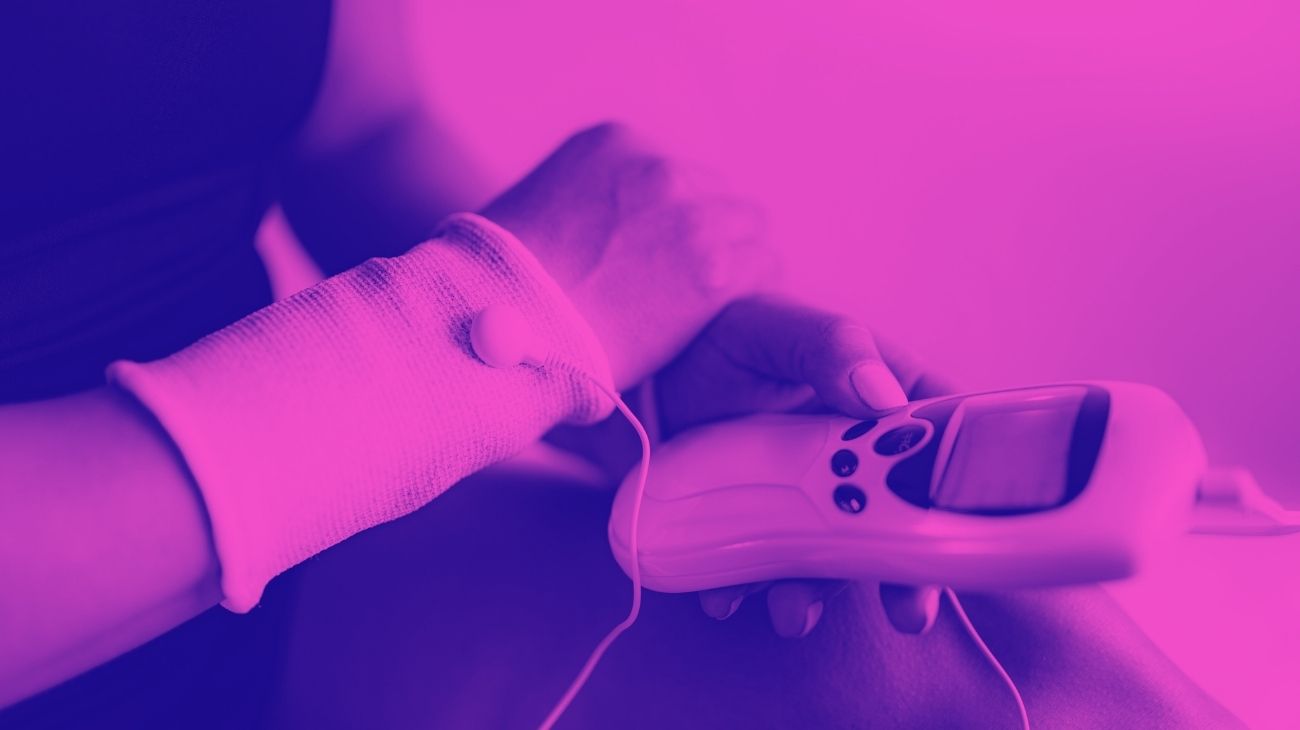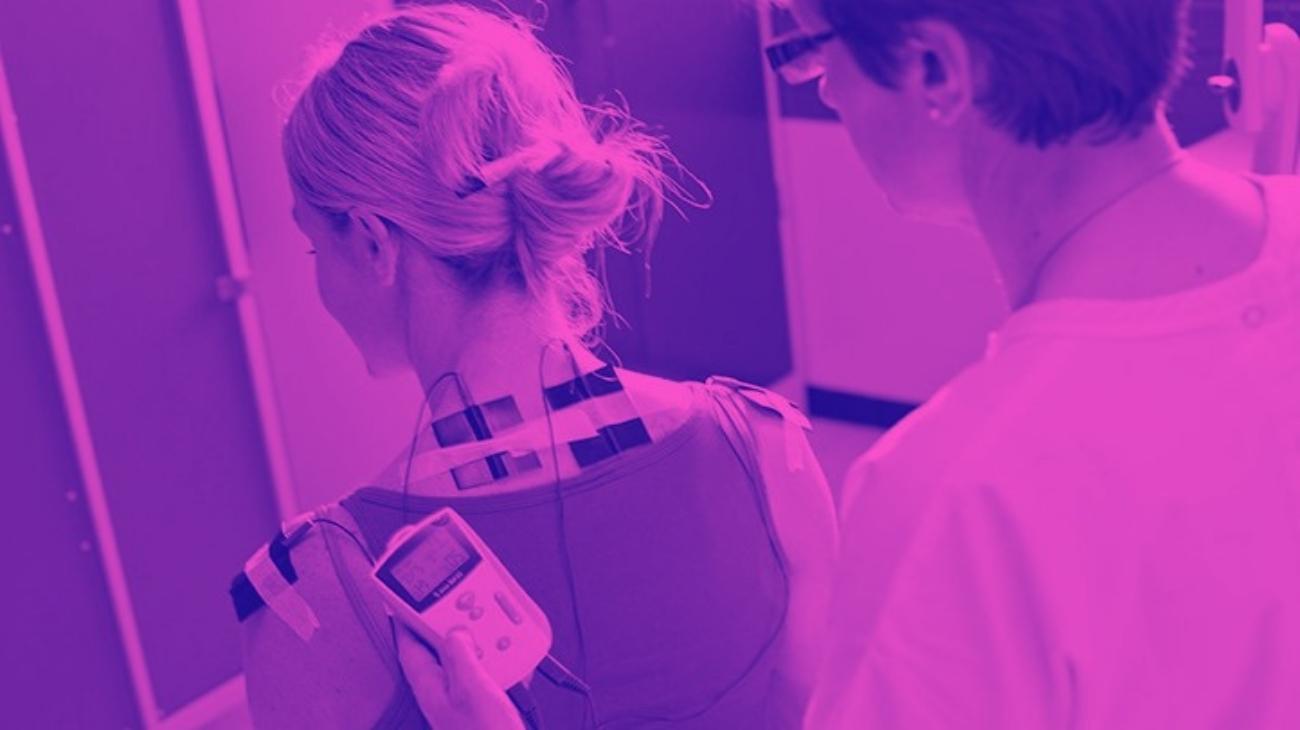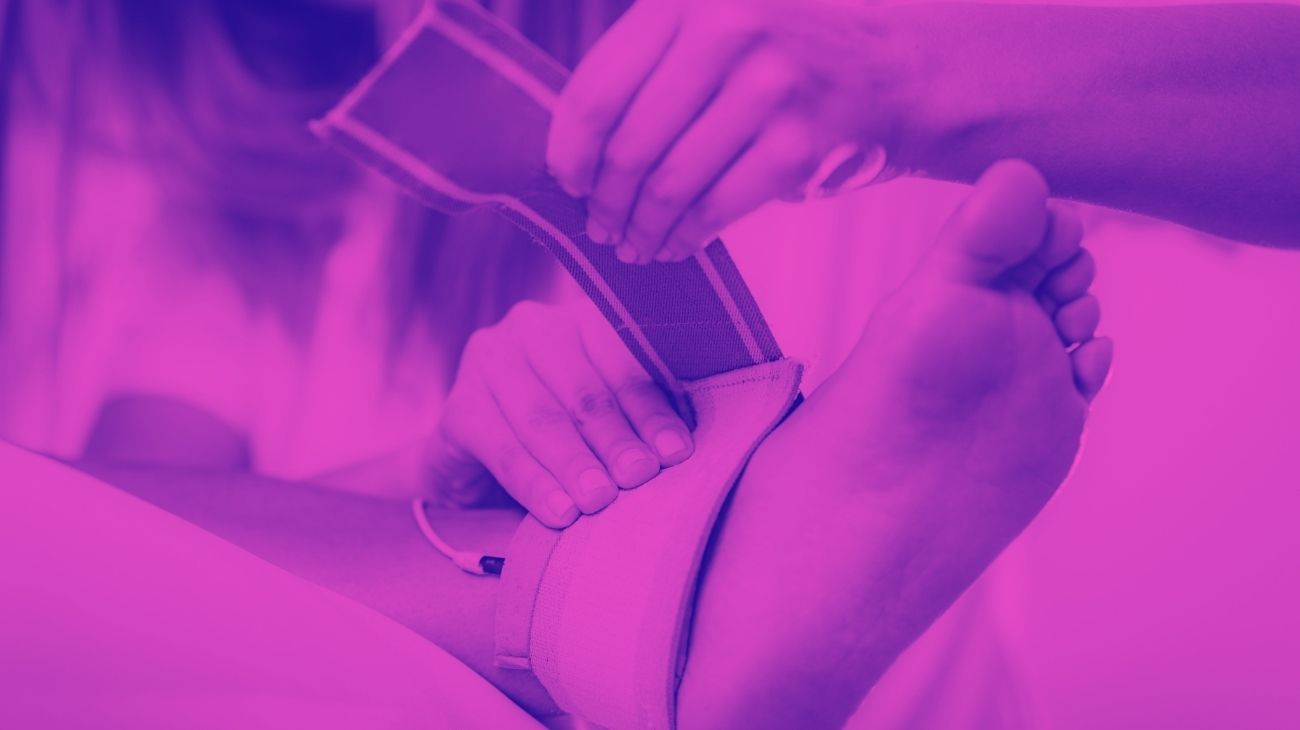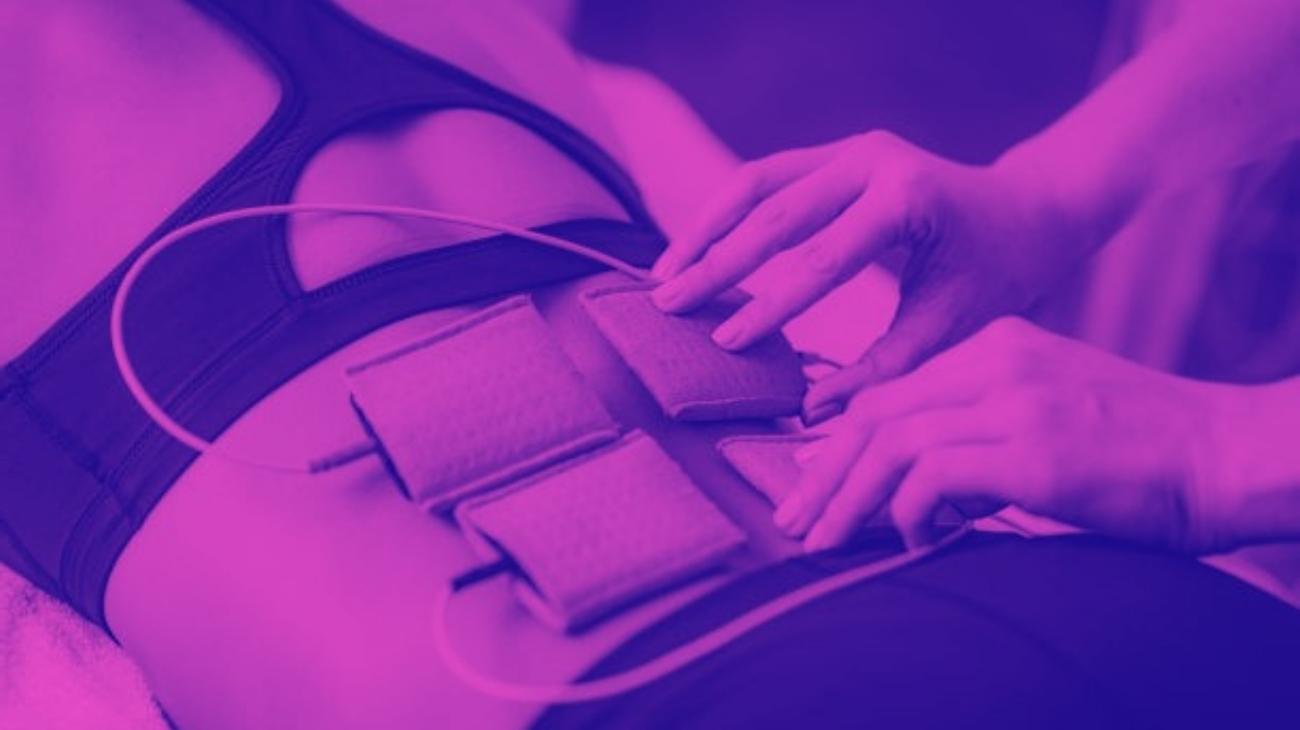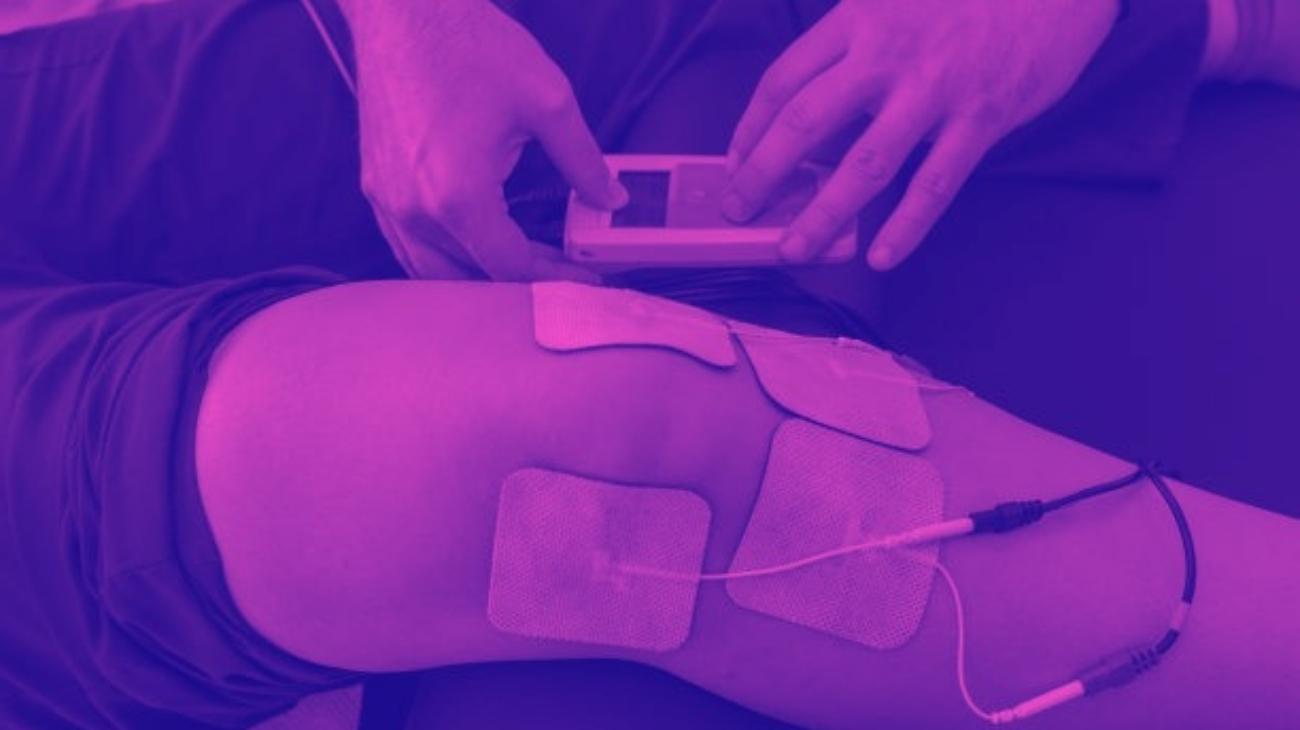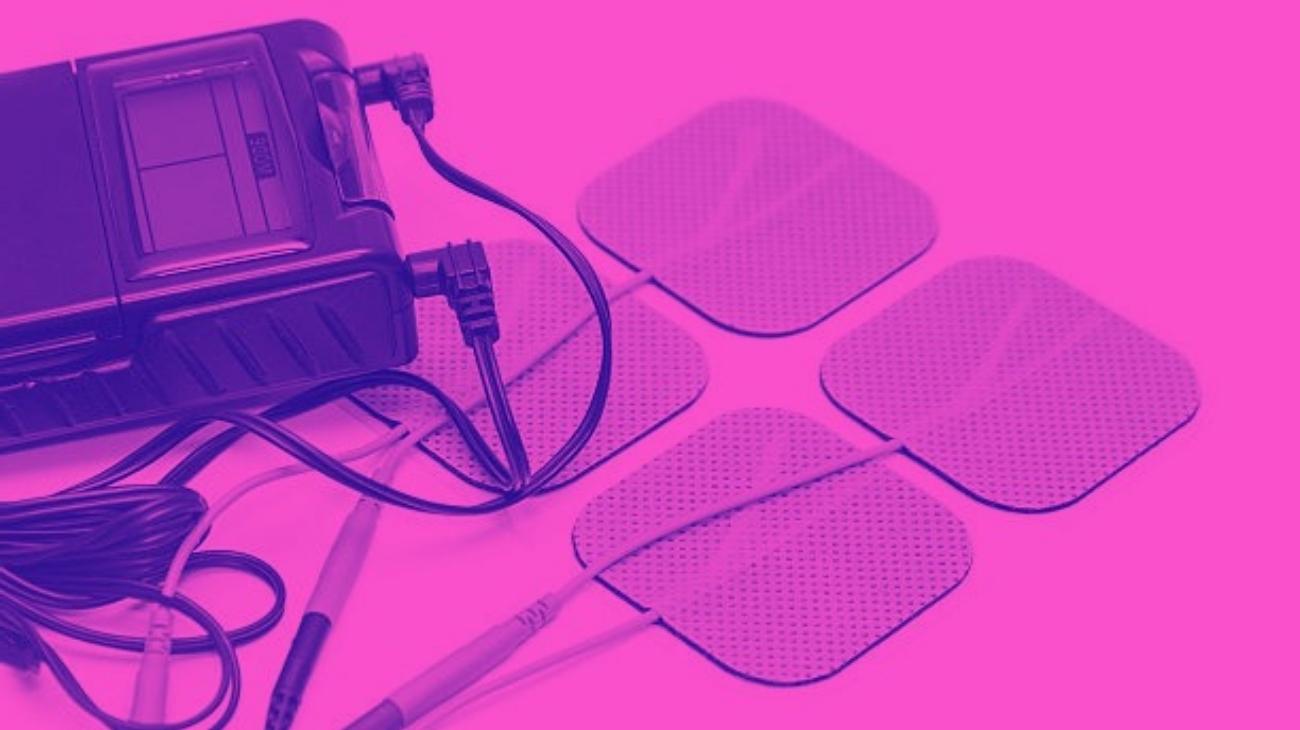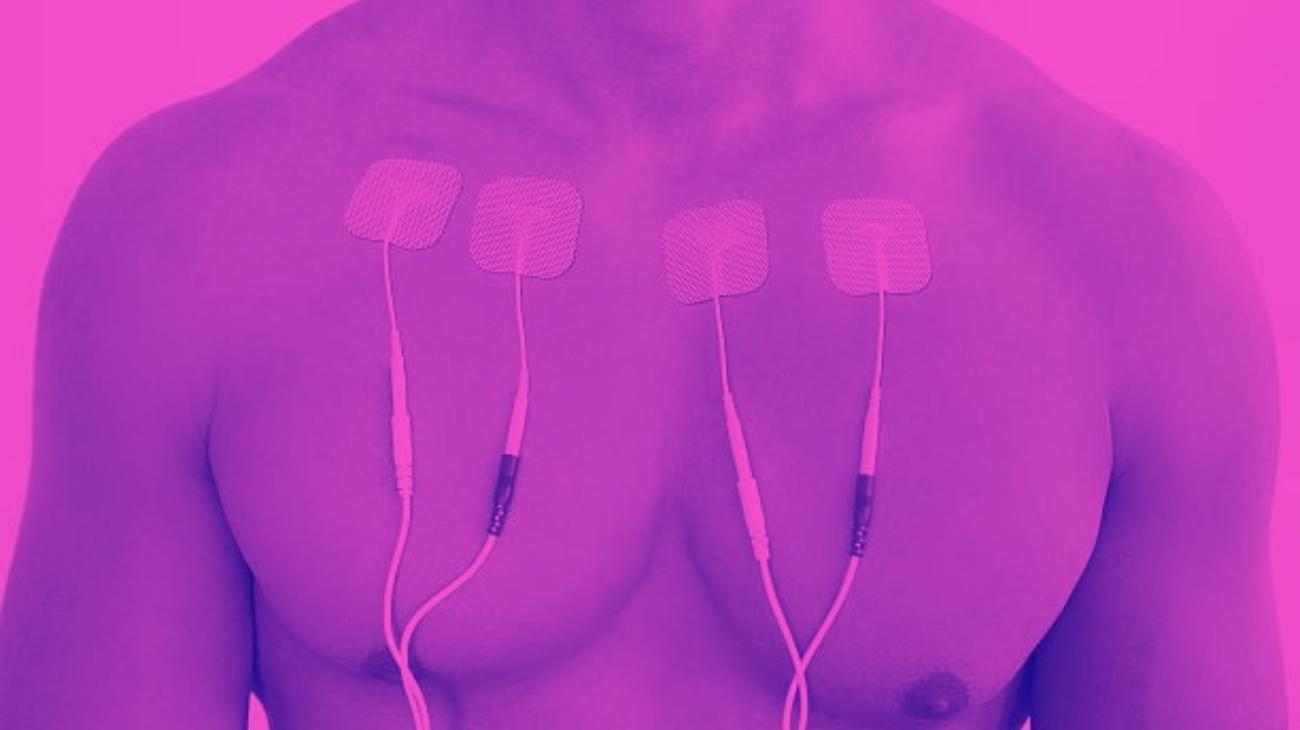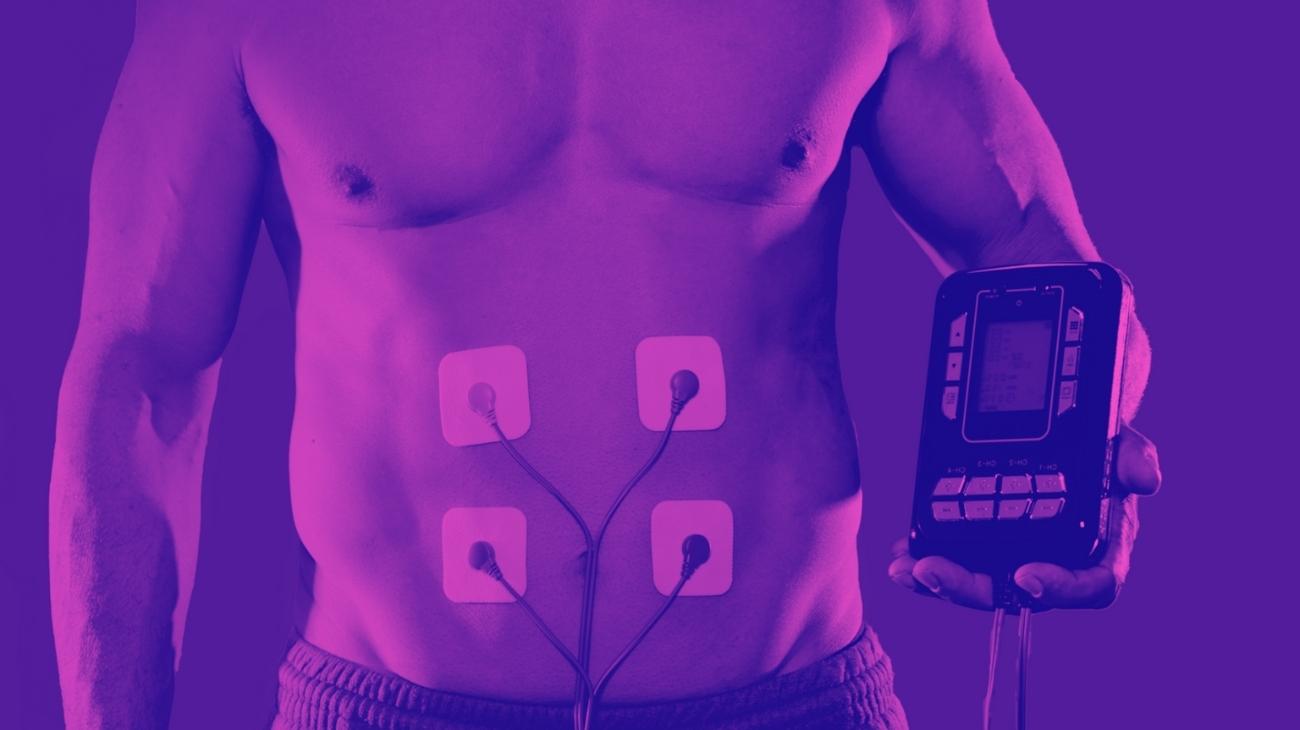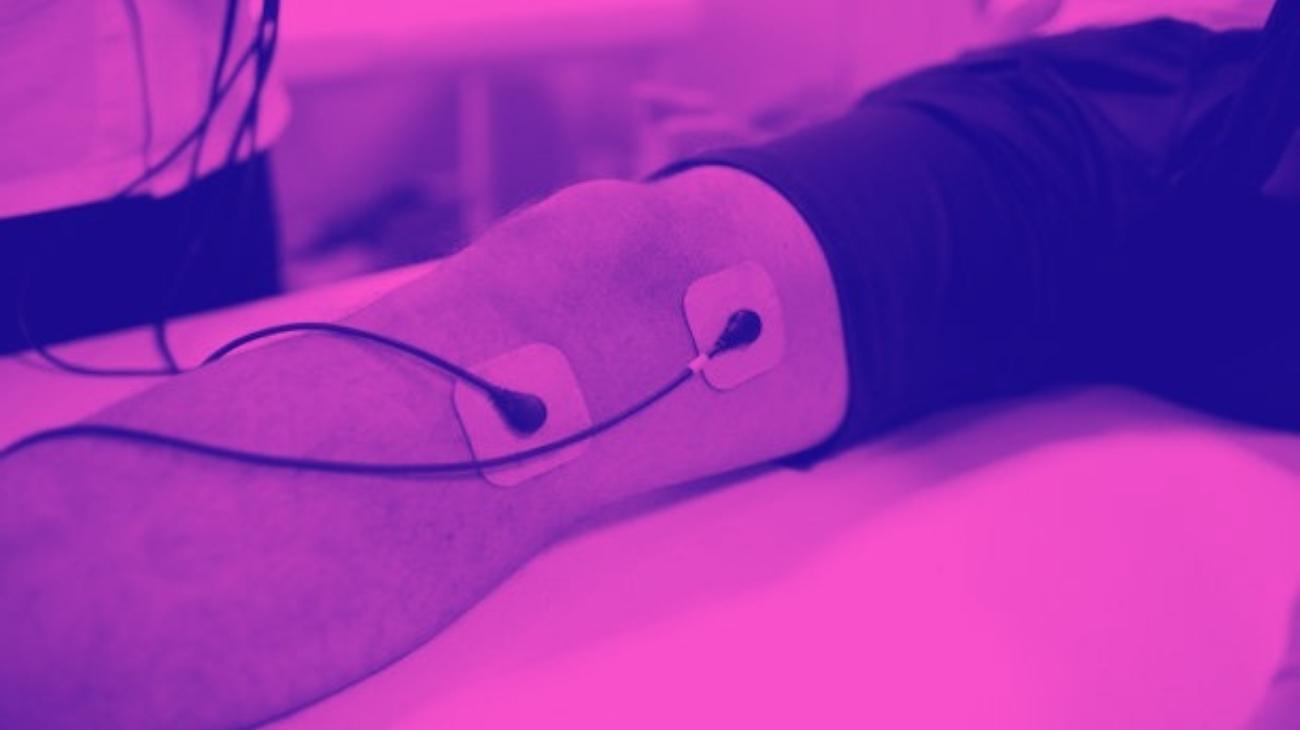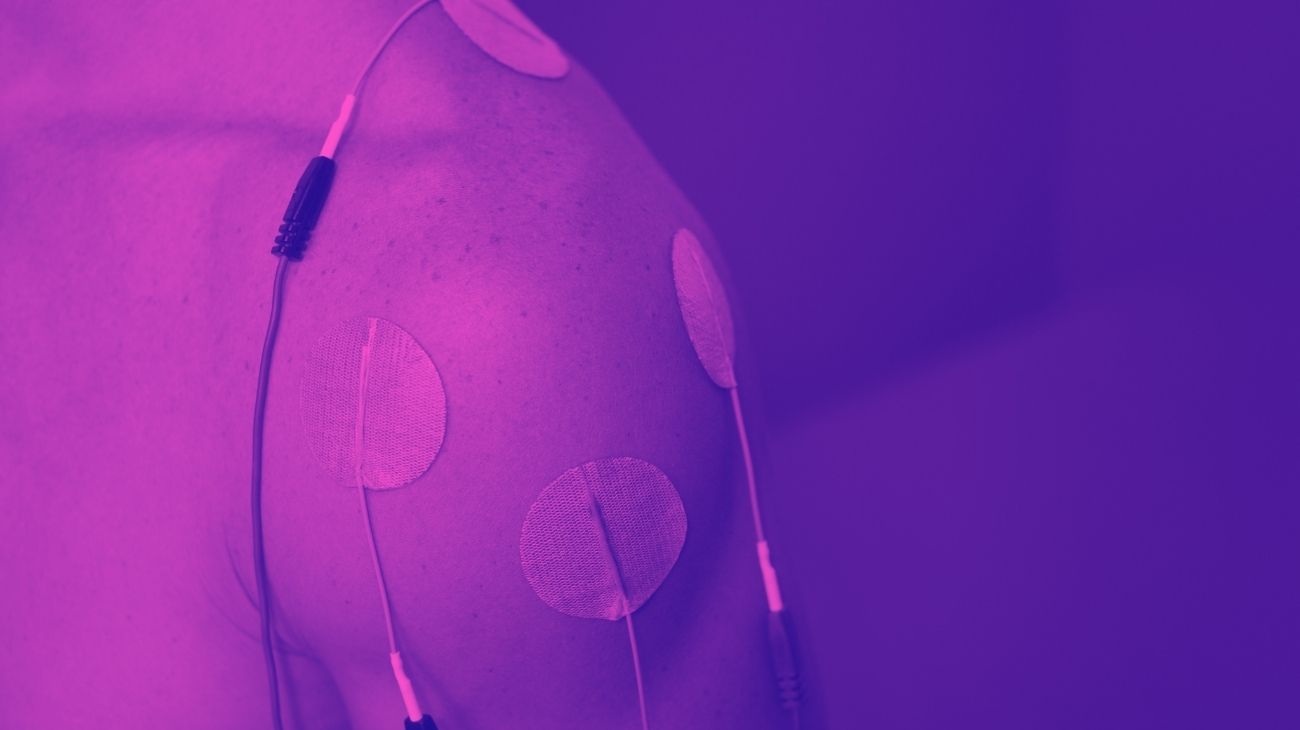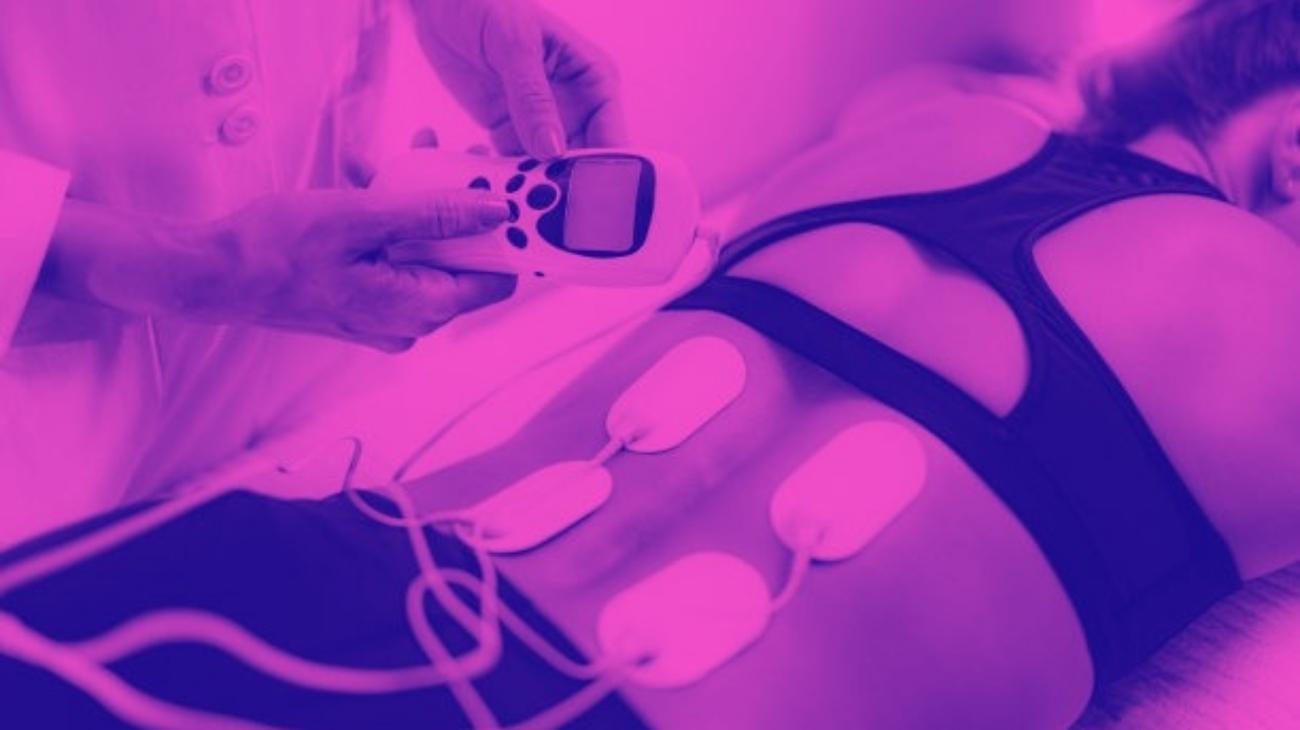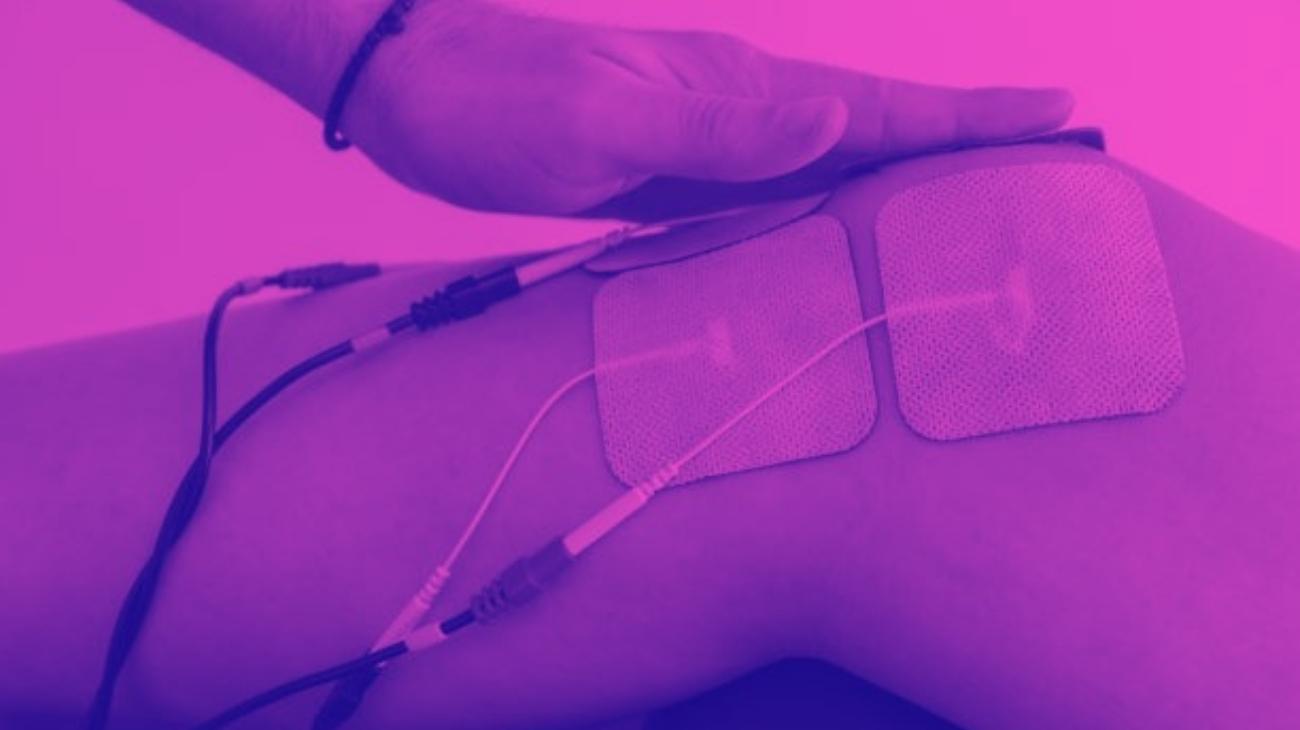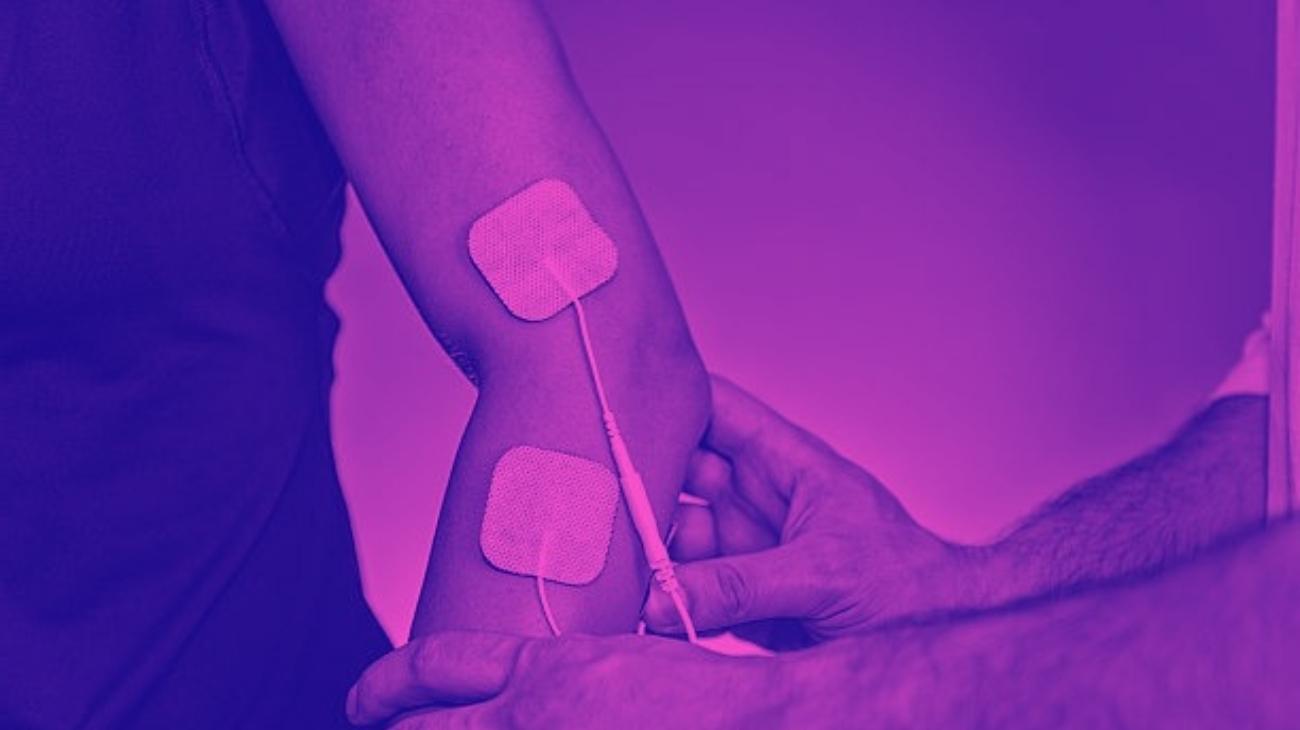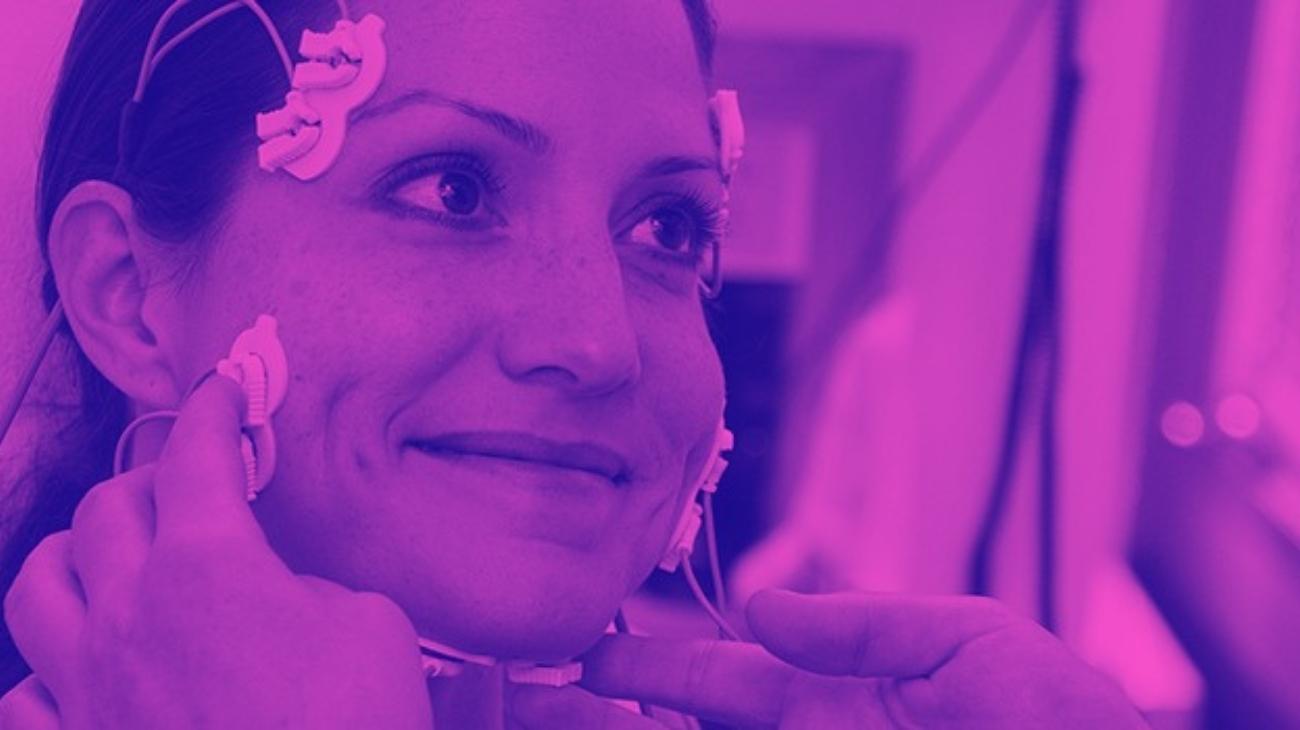- How to use TENS machines to relieve herniated disc pain?
- Best TENS units to treat low back pain
- How to use EMS to strengthen muscles and prevent a herniated disc?
- Best EMS machines to avoid a low back injury
- Video: How to place electrodes pads for disc herniation?
- More types of EMS stimulators and TENS machines you should know about
- What is herniated disc and what are the causes?
- What are the most common types of lumbar injury?
- Differences between TENS and EMS: Which is better for treating disc herniation?
- Contraindications in the use of electrodes and electrotherapy
The human body has a fairly wide range of mobility, thanks to which we can perform a wide variety of tasks that require different types of movements. Much of this mobility is subject to the flexibility of the spine, so certain disorders that affect this area can severely limit body movement, either through lack of flexibility or tense pain. Among these disorders, one of the most common is disc herniation.
This injury can occur for a number of reasons and can be extremely limiting to body mobility as sufferers are subject to considerable pain that makes movement very laborious. In the following paragraphs, we will teach you everything you need to know about the symptoms and causes of herniated disc and how to use TENS and EMS electrotherapy techniques to treat the ailments caused by this disease.
How to use TENS machines to relieve herniated disc pain?
TENS units are very useful for the treatment of ailments caused by a variety of injuries similar to disc herniation, so their use is widespread in the field of physiotherapy.
For this reason, it is necessary to have the required knowledge to apply an effective TENS session. Next, we will show you how to position the electrodes and the configuration you should enter in the device, in order to maximize the results of the therapy.
Where to place the electrodes?
To ensure maximum effectiveness of the treatment, the electrodes should be positioned on both sides of the spine in the area affected by herniated disc pain, so that the central point of pain is in the middle of the pads.
In the particular case of the lower back, the electrodes should be positioned on the thoracolumbar fascia, on both sides of the spine, at the level of the vertebrae that are affected
Which current to use?
The current to be applied for the treatment of herniated disc pain depends on factors such as the intensity and duration of the pain. For both acute and chronic pain, the intensity varies substantially.
In case of a sudden and recent disc herniation, the intensity of the current should be approximately 100 to 120 Hz, while chronic pain requires a much lower intensity, between 2 and 10 Hz, but should be applied for longer periods to ensure full attention to the sciatic and lumbar nerve receptors.
Best TENS units to treat low back pain
The variety of TENS devices that exist for the treatment of different ailments gives us access to a wide selection of configurations and leads to alleviate herniated disc symptoms. For this purpose, we can make use of the machines described below:
- Type: TENS
- Channels: Dual
- Modes/Programs: 20 Modes
- Intensity: 20 Levels
- Wireless: Yes
- Heat Therapy: No
- Battery: Rechargeable Lithium (up to 10 hours)
- Electrodes: 8 Pads
- Display: Digital
- Size: Not specified
- Accelerates recovery from sports injuries
- Improves blood circulation
- Rechargeable battery
- Portable and small size
- Includes user manual
- Does not specify measurements and weight
- Not suitable for muscle hypertrophy
- No heat therapy
It has an independent dual-channel control mode, which allows you to treat different parts of the body with different settings and intensities as required. You can select from 20 preset massage modes, each designed to relieve certain types of pain and produce an overall sense of relief.
Med-Fit - Dual channel TENS machine for fast, effective and accurate pain relief ideal for home use
- Type: TENS
- Channels: Dual
- Modes/Programs: 5 Modes
- Intensity: Not specified
- Wireless: Yes
- Heat Therapy: No
- Battery: Batteries
- Electrodes: 8 Pads
- Display: Digital
- Size: Not specified
- Reduces pain symptoms
- Improves joint mobility
- Improves blood circulation
- Accelerates recovery from sports injuries
- Includes user manual
- Does not specify intensity levels
- Does not specify which type of batteries to use
- Does not specify measurements and weight
Its transcutaneous electrical stimulation function offers an infallible form of acute and chronic pain relief through electrical impulses that block pain signals and promote the production of endorphins, making it ideal for treating the symptoms of arthritis, sciatica, muscle pain, joint pain and much more.
- Type: TENS
- Channels: -
- Modes/Programs: 4 Programmes
- Intensity: 15 Levels
- Wireless: Yes
- Heat therapy: No
- Battery: 2 AAA Batteries
- Electrodes: 6 Pads
- Display: No display
- Size: 22cm x 13cm x 5cm - 417 gr
- Control from mobile app
- Reduces pain symptoms
- Includes user manual
- Improves joint mobility
- Portable and small size
- No display included
- Few types of programmes
- Not suitable for muscle hypertrophy
With a size of 19 cm wide and 9 cm high, the WiTouch has the widest area of action on the market, with a current output strength of 0 - 110 mA for maximum effectiveness. It has a 2-button function that allows you to quickly change the device settings, and includes 3 reusable gel pads in the package you receive.
- Type: TENS
- Channels: -
- Modes/Programs: 6 Modes
- Intensity: Not specified
- Wireless: Yes
- Heat Therapy: No
- Battery: Rechargeable
- Electrodes: 4 gel electrodes
- Display: Touch
- Size: Not specified
- Improves joint mobility
- Improves blood circulation
- Accelerates recovery from sports injuries
- Reduces pain symptoms
- Wireless electrodes
- No intensity levels specified
- Does not specify measurements and weight
- Not suitable for muscle hypertrophy
Its low intensity electric impulses offer a complete recovery of muscular and nervous pains, and its reusable electrodes have a superior quality adhesive gel, long lasting and easy to apply, so that each session can be carried out in a very simple way.
- Type: Combo (TENS+EMS)
- Channels: 4
- Modes: 15 Programmes
- Intensity: Not specified
- Wireless: No
- Heat therapy: No
- Battery: 4 AAA
- Electrodes: 8 Pads
- Display: LCD
- Size: Not specified
- Improves blood circulation
- Includes 15 modes
- Independent control mode
- Reduces pain symptoms
- No rechargeable battery
- Does not specify intensity and size
It also has a session timer that allows you to control the duration of the therapies. You will be able to set the time of each session in an interval between 10 and 80 minutes. The package includes 1 electro stimulator, 4 sets of guide wires, 4 pairs of electrodes, 1 electrode case, 3 AAA batteries, 1 pad positioning guide and 1 user manual.
How to use EMS to strengthen muscles and prevent a herniated disc?
Although EMS electrostimulation is not a treatment method for herniated disc symptoms, there is a profound relationship between strengthening the muscles of the back and the prevention of this injury, since the stress placed on the intervertebral discs is reduced, decreasing the likelihood of wear and tear in the long term.
Below, we will show you the steps to follow in order to obtain the desired results:
Where to place the electrodes?
Positioning the electrodes for lower back muscle training is really simple compared to more complex areas of the body, because the pads are placed on the lumbar frame on both sides of the spine.
In this region, the electrodes are placed in pairs just above the thoracolumbar fascia, on the border with the erector spinae muscle, so that the electrical impulses cover both muscle groups.
What intensity to use?
Strengthening the lower back muscles requires a relatively low intensity compared to other muscle groups, whereby they can increase their strength and endurance to generate better support for the lumbar region of the spine.
To improve the strength of this region, the factor to take into account is the physical condition of the user. This makes the ideal intensity vary in the range of 60 to 85 Hz. This current is usually applied in bursts of approximately 60 seconds to begin adaptation to muscle contractions.
Best EMS machines to avoid a low back injury
The training of the lower spine through EMS devices can be done in several ways, so you can find at your disposal a great variety of devices with the frequencies and intensity required to improve the muscular structure of the lumbar area and favor the prevention of disc herniation. For this, we can make use of the following devices:
- Type: EMS
- Channels: 4
- Modes/Programs: 40 Programmes
- Intensity: Not specified
- Wireless: Yes
- Heat Therapy: No
- Battery: Rechargeable
- Electrodes: 4 electrodes
- Display: Digital
- Size: 15 x 34 x 30 cm; 200gr
- Wireless electrodes
- Includes user manual
- Prevents muscle atrophy
- Portable and small size
- Includes carrying bag
- No heat therapy
- No battery life specified
- No intensity levels specified
It features MI tracking technology, which allows the SP 8.0 to perform a quick automatic muscle scan, and set the appropriate program according to the goal you want to achieve. This professional-grade training device will revolutionize the way you exercise, as it is designed for athletes who practice their discipline on a daily basis.
- Type: Combo
- Channels: Not specified
- Modes/Programs: Not specified
- Intensity: 20 Levels
- Wireless: Yes
- Heat Therapy: No
- Battery: Rechargeable Lithium (up to 8 hours)
- Electrodes: 2 Pads
- Display: -
- Size: Not specified
- Improves blood circulation
- TENS+EMS Combo
- Wireless Device
- Accelerates recovery from sports injuries
- Reduces pain symptoms
- Does not specify measurements and weight
- No display included
- Modes/programs not specified
It has a rechargeable battery that provides an autonomy of up to 8 hours, and more than 1000 charges. You can charge it through its USB port, by means of the cable included in the package. In addition, you will find the mini electrostimulation unit, 1 butterfly electrode, 2 self-adhesive electrodes of 2x5 cm, 1 user manual and several guides for positioning the unit.
- Type: Combo
- Channels: -
- Modes/Programs: 15 Programs
- Intensity: Not specified
- Wireless: Yes
- Heat Therapy: No
- Battery: Rechargeable Lithium
- Electrodes: 4 Pads
- Display: No display
- Size: Not specified
- TENS+EMS combo
- Control from mobile app
- Rechargeable battery
- Includes user manual
- Reduces pain symptoms
- No battery life specified
- No intensity levels specified
- Does not specify dimensions and weight
The simple interface of the PowerDot app will guide you through everything you need to know to operate the electrodes efficiently. The purchase package includes 2 pre-loaded pods, 2 sets of electrodes with corresponding pads, 2 sets of cables and 2 micro USB charging cables, along with a carrying case so you can take your electrodes with you wherever you go.
- Type: Combo (TENS+EMS)
- Channels: 4
- Modes: 30 Programmes
- Intensity: Not specified
- Wireless: No
- Heat therapy: No
- Battery: Rechargeable (10 hours of use)
- Electrodes: 16 Pads
- Display: Digital
- Size: Not specified
- 16 electrodes
- Rechargeable battery
- Portable device
- 30 different programmes
- No indication of size and weight
- No intensity specified
Its 4-channel function gives you the ability to apply 4 different therapies through 8 electrodes pads to different areas of the body, allowing you to treat them simultaneously with a specific mode of use for each area. Additionally, its long-lasting rechargeable battery will give you an autonomy of up to 10 continuous hours of use, and can be recharged a minimum of 1,000 times.
- Type: Combo
- Channels: Dual
- Modes/Programs: 5 Programs
- Intensity: 99 Levels
- Wireless: Yes
- Heat Therapy: No
- Battery: 2 AA Batteries
- Electrodes: 2 Pads
- Display: Digital
- Size: Not specified
- Improves blood circulation
- Accelerates recovery from sports injuries
- TENS+EMS Combo
- Portable and small size
- Good quality
- Does not specify measurements and weight
- Few types of programmes
- No heat therapy
The Alivia brand also has a specialized toning program for the pelvic floor that will allow you to strengthen this area with only 20 minutes of daily use, and has an innovative open circuit detection system that will calibrate the intensity of the electrical impulses to 0 if one of the electrodes becomes detached from the skin, protecting you against electric shocks.
Video: How to place electrodes pads for disc herniation?
Electrodes for lower back
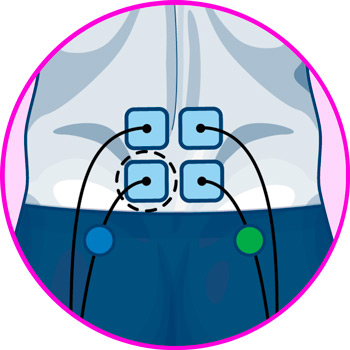
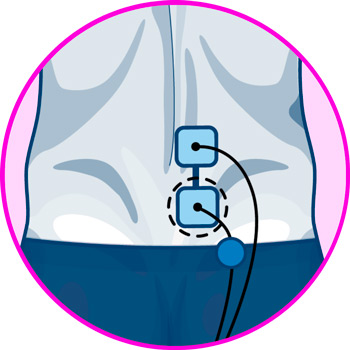
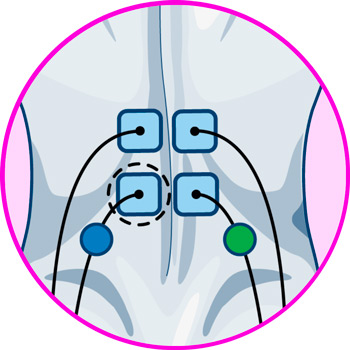
More types of EMS stimulators and TENS machines you should know about
What is herniated disc and what are the causes?
A herniated disc is an injury that consists of the degradation of the intervertebral discs, which are responsible for providing cushioning to the vertebrae during movement, preventing them from colliding with each other. This degeneration results in a collision between the vertebrae when performing certain movements, causing a sensation of pain that can become disabling for the patient.
In most cases, the exact causes of disc herniation are not precise. It is caused by an aging effect called disc degeneration, to which the following factors contribute:
- Age: after 45 years of age, the degeneration of the intervertebral discs accelerates.
- Work and hobbies: professions or hobbies that require bending and lifting heavy objects may increase the probability of suffering herniated discs.
- Genetics: a history of low back disorders may influence a patient's likelihood of developing herniated discs
- Smoking: excessive tobacco consumption is a factor that builds up the degeneration of the intervertebral discs.
- Obesity: the external pressure applied to the spine due to overweight increases friction between the vertebrae, causing disc erosion and greatly increasing the likelihood of herniated discs and other low back injuries.
What are the most common types of lumbar injury?
Although disc herniation can occur in almost any area of the back, its most common area of effect is the lumbar area, and in addition to disc herniation, the lumbar region is particularly vulnerable to a variety of disorders and injuries that can severely limit movement and cause intense pain in the patient.
Among the most common lumbar disorders are those described below:
- Vertebral impingement: is an injury caused by a blockage of one or more vertebrae, resulting in limited movement and stabbing pain.
- Arthrosis: is a progressive degeneration of the cartilage that forms the intervertebral discs, limiting the cushioning they provide.
- Sciatica: is an ailment caused by inflammation of the sciatic nerve and can generate pain that radiates from the lower back to the feet.
- Lumbago: it is a generalized pain in the lower back that can be caused by several reasons, from muscular stress to trauma.
- Scoliosis: is a deviation of a portion of the spine that can occur in the cervical, dorsal or lumbar area, it is a congenital condition.
Differences between TENS and EMS: Which is better for treating disc herniation?
Electrotherapy treatment has been proven to be effective in relieving the ailments caused by disc herniation when applied correctly. For this, there are certain factors that must be taken into consideration, such as the difference between TENS therapy and EMS therapy, and the different effects that each has on the nerves and muscles.
In the case of TENS therapy, or Transcutaneous Electrical Nerve Stimulation, it can be defined as a method of physiotherapy applied for the relief of pain caused by trauma and disease, and is characterized by a number of unique properties, among which we can highlight:
- They apply electric currents ranging from 1 to 250 Hz.
- Its electrical impulses interact directly with the tissue of the sciatic nerve and its branches, reducing the sensation of pain.
- It works as a blocker of pain receptors, preventing signals from reaching the affected area to the brain.
- Its use is widespread in the field of physiotherapy, in the area of treatment of symptoms caused by injuries and disorders.
For its part, EMS therapy or Electro Muscle Stimulation, is not focused on the treatment of ailments, but on muscle training and conditioning for high competition athletes and regular users. This training technique can be highlighted by the following characteristics:
- It was designed as a method of physical conditioning.
- Its electrical impulses vary between 70 and 150 Hz.
- Itdirectly stimulates the muscle tissue, promoting its growth and the generation of muscle fibers through contractions.
- It is used for both physiotherapy and physical training.
With this information, the most accurate conclusion favors the effectiveness of Transcutaneous Electrical Nerve Stimulation (TENS) over Electro Muscle Stimulation (EMS), thanks to the fact that its low frequency electrical impulses are designed to interact with the nerve endings of the sensory branches of the sciatic nerve and the terminal ramifications of the lumbar nerves, limiting their ability to receive pain impulses from the brain and gradually mitigating the sensation of pain in the patient.
On the other hand, muscular electrostimulation therapy does not offer herniated disc patients the required sensation of relief, since its electrical impulses do not interact with the nerve branches of the lumbar region, but with the muscle tissue, causing contractions that can generate intense pain by directly stimulating the sciatic and lumbar nerves, damaging the patient's integrity.











